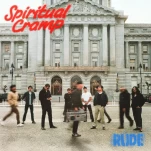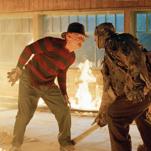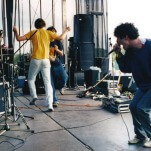Catching Up With… Waltz with Bashir‘s Ari Folman
Writer/director Ari Folman’s Waltz with Bashir is something audiences may not seen before: an animated documentary. In the film, Folman tries to piece together the gaps in his memory from serving in the Israeli Defense Force during the Lebanon War in 1982. And though the images are animated, their power and meaning remain intact, and the conflict’s full destruction is on display.
The film builds up to the Sabra and Shatila massacre, a shadowy event in Folman’s mind (and for good reason—over 3,000 people were slaughtered), catalyzed by the death of the film’s titular character: Lebanon president-elect Bashir Gemayel, who was killed by Palestinian Arabs just nine days before he was to assume office. Folman, just 19-years-old at the time, says Waltz with Bashir was his chance to reconnect with his own personal history, a history that had been blurred and dormant in his mind for over two decades. Paste recently talked with Folman about the film, which along with Persepolis and Waking Life is helping to pave new ground in the ever-evolving field of animation.
Paste: What compelled you to make the film after all of these years?
Ari Folman: Five years ago, I wanted an early release from the Israeli reserve army. Basically, I was doing nothing but writing silly instructional movies about how to defend yourself from a chemical attack, for example. They said they’d give me a release as long as I met with their therapist and tell everything I went through during the armed services. I did that, I had something like 10 sessions. At the end, I realized it was the first time ever for me to hear my very own personal story. It amazed me. And then I realized I’m not the only one, of course. I went to my friends and realized we never discussed what we did in the armed service. I figured out, I had the main storyline, but there were still some black holes in the story. I thought I should for a journey to figure out what happened.
Paste: In the film, you say you were trying to make sense of your part in the massacre. Is that because making sense of the rest of it is impossible?
Folman: You can’t really understand what happened there. You can’t understand why people would go into a camp and kill for three days. It was more than just killing, really, they did some unbelievable things. For me, it was more trying to figure out why all of those memories were suppressed. I understood they were suppressed, but where did they go?
Paste: So, at the end of this, what would you say you learned about these memories?
Folman: Well, there a lot of theories I can tell you. First, I think suppressing memories is not such a bad thing, as therapists will tell you. In many ways it helps you go on with your life and it’s a good way to go on with your life. But sometimes, it works. You can live your entire life suppressed, and be happy. Sometimes you wake up one day, and this memory for whatever reason reemerges from you and you have to deal with it, like in this story.
There was also something from one my interviewees that’s not in the film. This neurobiologist told me they’re doing very interesting research right now. They think if you’ve gone through a traumatic event, you go on living the memory and you tell the story again and again. After 10 or 20 years, it will be a completely different story because you will relive it in different ways. You will adopt different versions of the story, and add more details through the years. But if you went through an event and you immediately suppress it, they think that there’s a biological shell that will cover this memory in your brain. Once the shell is broken, if it’s broken, the memory will be purely fresh, as if it happened 10 minutes ago. They are trying to prove that now. This is a scientific theory, that you can either believe in or not believe in. For me, it makes sense after this film. When we started the journey I didn’t know what he was talking about. Now, I’m sorry he’s not in the film. He should’ve been in it.
-

-

-

-

-

-

-

-

-

-

-

-

-

-

-

-

-

-

-

-

-

-

-

-

-

-

-

-

-

-

-

-

-

-

-

-

-

-

-

-








































